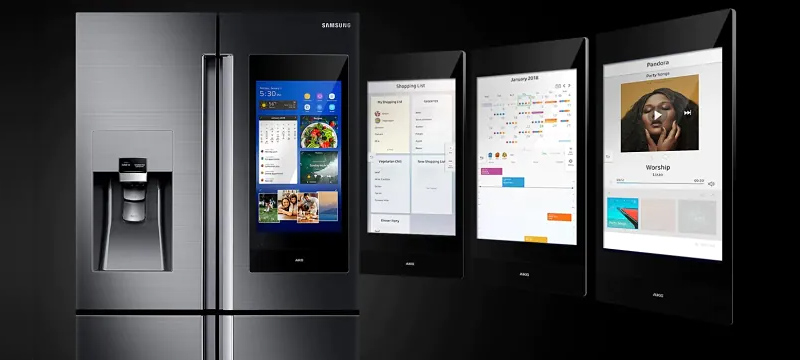
From Smart Fridges to Smart Followers: How the IoT and Viplikes Are Reshaping Social Media Strategies


Picture this: Your smart fridge just pinged you—“Out of almond milk. Also, your Instagram Reels could use more nutty engagement”. Okay, maybe your fridge isn’t that savvy (yet). But here’s the reality: The line between IoT gadgets and social media algorithms is blurring faster than a TikTok transition. Your coffee maker knows your sunrise routine. Your fitness tracker predicts your midnight snack cravings. So why are you still guessing what makes your audience hit “like”?
Welcome to the era where smart devices and smart followers collide. IoT isn’t just automating your home—it’s handing marketers a cheat sheet to human behaviour. And in this attention economy, brands that sync IoT insights with strategic social boosts like from Viplikes (yes, even the paid kind) aren’t just trending—they’re rewriting the rules. Let’s talk about how to hack the system—without breaking it.
1. Your Smart Toaster Knows More
Let’s face it, your smart devices are probably better at predicting your customers’ next move than your marketing team. Do you use Alexa to play rain sounds at 3 a.m.? She is a storehouse of behavioural data. Does this fitness tracker count your steps? It also tracks impulse purchases and mood swings.
The IoT is not just about gadgets communicating with each other; it’s when they whisper secrets to you. Imagine this: a coffee brand, using smart mug data, finds that its customers drink the fastest on Monday mornings. Boom — that’s your main commercial. The fashion retailer noticed that users of “smart mirrors” take 10 times more selfies in certain lighting conditions. Suddenly, cooperation with influential people has become much more strategic.
But here’s the catch: most companies treat the IoT like a fancy thermometer, when in fact it’s a crystal ball. Which brands are winning right now? They don’t just collect data; they turn it into rocket fuel for social platforms.
Actionable Twist:
- Check your IoT touchpoints — what is passively present in your analytics that can change your publication schedule, ad targeting, or even the tone of your content?
- Don’t just think about smart homes. “Smart engagement” means using real-world behaviour to predict digital habits. If your audience’s smartwatch shows a sharp jump at 6 p.m., now is not the time to post a 15-minute briefing.
The future is not just about connected devices; it’s about connected ideas. And if you’re not listening, then your toaster is already three steps ahead.
2. When Your Fridge Starts Giving Better Advice Than Specialists
Let’s talk about the unsung hero of your smart home—your refrigerator. While you’re busy debating Instagram algorithms, this stainless-steel genius is quietly noting that your users buy organic kale after yoga sessions and binge ice cream during finals week. It knows their cravings before they do.
Now, imagine if your promotion strategy had that level of intuition. That’s where Viplikes and smart engagement come in. These aren’t bot followers—these are hyper-relevant likes, comments, and shares from real people whose digital footprints align perfectly with your IoT-honed customer profiles. It’s like your fridge hand-delivering your content to the exact right appetites.
Why this matters:
-
Social Proof
When your posts get traction from *real* users who actually care (because IoT data says they should), algorithms reward you like a bartender tipping off their favorite regular.
The Domino Effect
One well-placed boost can trigger organic reach, turning lurkers into loyalists. Think of it as your smart speaker “accidentally” playing your ad right when someone’s debating a purchase.
3. The Dark Side of Smart Marketing
Let’s get real for a second—there’s something slightly unsettling about your smart scale sighing when you gain two pounds or your ad feed suddenly pushing gym memberships after your third midnight snack. IoT gives marketers godlike powers of prediction, but with great data comes great responsibility (and the occasional existential crisis).
Here’s the tightrope walk: how do you leverage IoT-driven insights without creeping out your audience?
-
1. Personalisation
There’s a fine line between “Wow, this brand turns me on!” and “Wait, how do they know I just googled divorce lawyers?” What’s the point? Transparency. If you use IoT data to create ads, make sure that your targeting is based on luck, not obsession. For example: The travel brand uses weather data to promote sunny getaways—smart. Using someone’s sleep tracker data to sell melatonin is questionable.
2. Algorithmic Oversaturation
If you can publish a post for every user who has a smart toothbrush, it doesn’t mean that you should do it. Oversaturation of feeds with hyper-targeted ads leads to user fatigue and unsubscription.
Conclusion
The future of marketing lies not only in being on social media but also in understanding the real behaviour of people behind screens. Your clients’ devices display a strikingly accurate picture of their lives. The question is, are you watching? Because we can guarantee that your competitors are watching. And their toaster probably helps them with that.
The post From Smart Fridges to Smart Followers: How the IoT and Viplikes Are Reshaping Social Media Strategies appeared first on IoT Business News.
